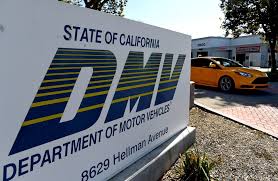Navigating life post-DUI (Driving Under the Influence) in California can be a challenging ordeal, especially when it comes to regaining your driving privileges. That’s why it is a good idea to consult with an experienced Huntington Beach DUI lawyer about your situation. A restricted license offers a viable pathway for individuals to return to some semblance of normalcy, as it allows limited driving privileges under specific conditions or, with an Ignition Interlock Device, allows you to drive any time you like. This article provides a comprehensive guide on how to obtain a restricted license after a DUI in California, covering eligibility criteria, application steps, and necessary documentation.

Understanding a Restricted License
A restricted license in California permits individuals to drive under certain conditions despite a DUI conviction. The driving privileges under a non-IID restricted license are limited to necessary activities such as commuting to work, attending DUI educational programs, or fulfilling court-ordered duties. An IID restricted license, on the other hand, allows you to drive any time you like and for any purpose.
Eligibility for a Restricted License
Before diving into the application process, it’s essential to understand if you are eligible for a restricted license. The primary criteria include:
1. First-Time Offenders:
– If it’s your first DUI offense, you are typically eligible for a restricted license after a mandatory 30-day suspension period. You are eligible for an Ignition Interlock Device (IID) Restricted License right away.
– This period begins immediately following your DUI arrest.
2. Non-First Time and Refusal Offenders:
– For individuals with prior DUI offenses or those who refused a chemical test, the path to a restricted license is more complicated.
– These individuals may face longer suspension periods and additional requirements.
3. SR-22 Insurance Requirement:
– All applicants must obtain an SR-22 form from their insurance company.
– This form serves as proof of financial responsibility and must be maintained for a specified duration.
4. Enrollment in a DUI Program:

– Enrolling in and consistently attending a state-approved DUI program is crucial.
– The length of these alcohol programs varies based on the severity of the offense and the number of prior offenses.
Steps to Obtain a Non-IID Restricted License
The process to obtain a restricted license involves several stages, each requiring careful attention and meticulous documentation.
1. Serve the Mandatory Suspension Period (For Non-IID Restricted License)
For first-time DUI offenders, a 30-day suspension is mandatory. During this period, no driving is permitted. Use this time to prepare the necessary documents and complete required steps for post-suspension procedures.
2. Obtain SR-22 Insurance Certificate
The SR-22 form, which you can obtain from your insurance provider, must be filed with the California Department of Motor Vehicles (DMV). It’s a mandatory requirement for reinstating driving privileges.
– Contact Your Insurer: Speak to your insurance company to understand the costs and implications of filing the SR-22.
– File the Form: Ensure that the form is submitted directly to the DMV by your insurer.
3. Enroll in a DUI Program
Enroll in a licensed DUI program as soon as possible.
– Select a Program: Choose a state-approved program that fits your needs. Programs can range from three to nine months or longer, depending on the offense.
– Enroll and Attend: Provide proof of enrollment to the DMV, and ensure regular attendance to comply with court-ordered requirements.
4. Pay the Reinstatement and Application Fees
There are several fees associated with reinstating your driver’s license and applying for a restricted license.
– Reinstatement Fees: Pay the DMV reinstatement fee, which varies depending on the specifics of your case.
– Application Fees: Additionally, a fee is required to apply for the restricted license itself.
5. Visit a DMV Office

Given the complexity of the process, visiting a DMV office in person is advisable.
– Required Documents: Bring all necessary documents including your SR-22 certificate, proof of enrollment in a DUI program, and payment for applicable fees.
– Complete Application: Fill out the DL 44 form (Application for a Driver License or Identification Card) at the DMV office.
Steps to Obtain an IID Restricted License
If you want to drive right away without waiting 30 days, you can install a breath-testing device in your vehicle called an Ignition Interlock Device or IID. You will also need to enroll in an alcohol program and obtain an SR-22. Once you have done these things, you can go into the DMV and get an IID Restricted License which will allow you to drive any time you like. You can drive through the entire suspension period.
Common Pitfalls to Avoid
Navigating the process can be daunting. It can be very helpful to consult with an Orange County DUI attorney for guidance. Here are some common mistakes to avoid to ensure a smooth application:
– Delay in Filing SR-22: Delays in obtaining and filing the SR-22 certificate can prolong the suspension period.
– Incomplete Documentation: Failing to present all required documents during the DMV visit can result in additional trips and delays.
– Non-Compliance with DUI Program: Missing classes or failing to attend the DUI program as required can jeopardize your eligibility for a restricted license. In fact, if you are kicked out of your alcohol program for any reason, you will lose your restricted license. Although your Orange County DUI lawyer can go into court and get court authorization for you to re-enroll in the program, the DMV will NOT give you back a restricted license.
– Misunderstanding Eligibility Requirements: Ensure you fully understand the specific requirements pertinent to your situation, especially if you have prior offenses or refused a chemical test. Again, it is helpful to consult with a Huntington Beach DUI attorney. If you refused a chemical test you will be suspended for an entire year without any possibility of obtaining a restricted license.
Post-Approval Considerations
Once your application for a restricted license is approved, it’s essential to adhere strictly to the conditions of your restricted driving privileges. Violation of these conditions can result in further penalties, including potential revocation of the restricted license. Keep the following pointers in mind:
– Authorized Routes Only: If you don’t have an IID restricted license, make sure you only drive during permitted hours and for the designated purposes, such as going to work or a DUI program.
– Maintain SR-22 Insurance: Consistently renew and maintain your SR-22 insurance without lapses throughout the required three year time frame.
– DUI Program Attendance: Continue attending and complete your DUI program without missing any sessions.
Conclusion
Regaining your driving privileges through a restricted license after a DUI in California demands careful adherence to legal requirements and diligent preparation. By understanding the eligibility criteria, following the structured application process, and avoiding common pitfalls, you can successfully navigate this challenging period and work towards restoring your full driving privileges. It’s essential to stay informed, organized, and compliant with all legal mandates to ensure a smooth and successful transition back to driving.